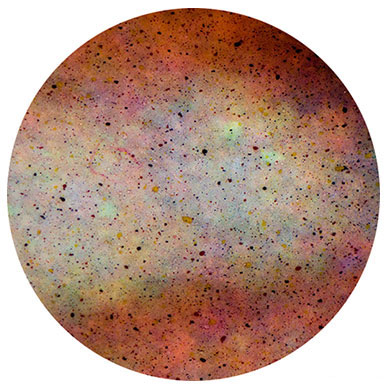- Poitevin mixed carbon powder into a mixture of gelatin and potassium dichromate while searching for a permanent photographic process . When paper is coated with this tinted gelatin-dichromate mixture, any exposed areas harden and become insoluble in water. When immersed in water, the non-exposed areas dissolves, only leaving the hardened mixture on the paper [1].
- Swan added a small amount of sugar to the mixture which produced a less brittle image layer when dried. Additionally, the coated paper was exposed under a negative and attached. facedown to a support.
 |
| View from the Lawn, Dennicannibly Vernon Heath (1870s) |
- A single transfer process produces a reversed image
- A double transfer process was used "When printing from negatives that contained orientation-sensitive visual information" [2]. Here a sensitized sheet of carbon tissue is placed in contact with a negative and exposed to an ultraviolet light source. The negative is made with an emulsion side of the tissue. After exposure, separate the negative from the tissue and soak the latter underwater with a paper substrate at about 65 degrees F, for 45-50 seconds, and then squeegee the tissue with a temporary plastic support. This creates a sandwich effect: temporary support - carbon image -final paper substrate. Cover with a sheet of blotting paper, place a sheet of plate glass over the paper, and leave for 20-30 minutes. When dry, transfer to a tray of warm water and develop by washing away the insoluble pigmented gelatin that was included within the carbon tissue [3].
- Reddish brown, dark brown, and black tones
- Improved sharpness of detail when compared to silver prints
- Features an even and linear distribution of tones from the highest lights to the deepest shadows [5].
- Surfaces can be matte, glossy, or a relief surface
- Darker areas (which feature higher concentration of gelatin) appear glossier than others [6].
- With a microscope, one can see the presence of large carbon particles or pigment clusters. These are irregularly distributed within lighter areas of the image [7].
 |
| Microscopic view of pigment clusters |
- Edges of prints that are un-mounted can feature delamination or lifting of the pigmented gelatin layer
- Surface cracks can appear in the thickest parts of the gelatin layer on the print [8].
- Light fading and yellowing are rather rare with carbon prints unlike silver-based images
- Images made with organic dyes can experience light fading due to the dyes' light sensitivity
- The conservation of prints "Made with pigments other than carbon black depends on the stability of their pigment mixture -not all pigments are as light stable as carbon black" [9].
- Alfred Stieglitz
 |
| Winter - Fifth Avenue Alfred Stieglitz (1893) |
- William James Stillman
 |
| The Acropolis of Athens William James Stillman (1869) |
[2]. Stulik & Kaplan, The Atlas of Analytical Signatures of Photographic Processes, 12.
[3]. Ibid., 12.
[4]. Bertrand Lavedrine, Photographs of the past: Process and preservation (Los Angeles: The Getty Conservation Institute, 2009) 164.
[5]. Sandy King, “Carbon Transfer: Contemporary Printers,” Sandy King: Photography, 2008, http://sandykingphotography.com/resources/technical-writing/carbon-transfer-contemporary-printers.
[6]. Ibid., 14.
[7]. Ibid., 15.
[8]. Lavedrine, Photographs of the Past, 167.
[9]. Ibid., 167.
No comments:
Post a Comment